Influenza
How to submit an article:
- Registered users can submit any published journal article that has a unique DOI (Digital Object Identifier) name or link to Research Hub.
- For example, you can paste the full DOI link:
https://doi.org/10.1109/5.771073or just the DOI name:10.1109/5.771073into the field above and click submit. - The person who is first to submit a valid article to Research Hub will forever be credited for it, and every article submission earns you +6 Research Points.
Also known as: Flu
Published research studies are articles that present the findings of original research that has undergone a peer-review process and has been made publicly available in scholarly journals, books or other media.
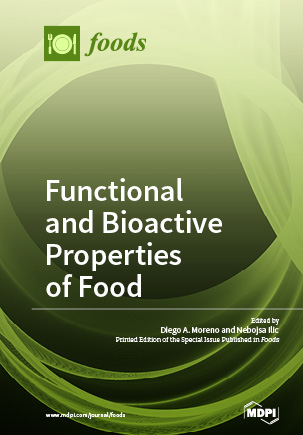
Antiviral Activity of Beebread, Bee-Collected Pollen and Artificially Fermented Pollen against Influenza A Virus
2023 May 13 Foods Dimitriou T, Asoutis Didaras N, Barda C, Skopeliti D, Kontogianni K, Karatasou K, et al.
Experimental Study Bee BreadBee-collected pollen and bee bread, particularly when artificially fermented, demonstrate significant antiviral activity against the H1N1 strain of the influenza A virus.

Effectiveness and safety of Qingfei Dayuan granules for treating influenza and upper respiratory tract infections manifested by the pulmonary heat-toxin syndrome: A multicenter, randomized, double-blind, placebo-controlled trial
2023 Mar 15 Frontiers in Pharmacology Li W, Xie L, Zhu X, Yang Y, Wang L, Yang M, et al.
The trial showed that QFDY was an effective and safe treatment modality for influenza and URTIs manifested by PHTS because it shortened the complete fever relief time, accelerated clinical recovery, and alleviated symptoms such as cough, a stuffy and running nose, and sneezing during the course of treatment.
Randomised Controlled Trial Qingfei Dayuan Granules Influenza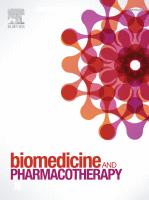
Traditional Chinese medicines as effective agents against influenza virus-induced pneumonia
2022 Sep Biomedicine & Pharmacotherapy Yang M, Wang Y, Yue Y, Liang L, Peng M, Zhao M, et al.
There has been some progress in the prevention and treatment of IVP by using TCMs. However, most research has focused on viral replication, the role of inflammatory cytokines, oxidative stress, and lung inflammatory cell infiltration in the pathogenesis of the disease, while there has been relatively little in-depth research on the lung lesions caused by influenza virus infection and on the role TCMs may have in preventing them. At present, analyses of the chemical components and mechanisms of action of TCMs useful in the treatment of IVP are insufficient, and this restricts their further use.
Systematic Review Meta-Analysis influenza virus-induced pneumonia
The Anti-Viral Activity of Prunella vulgaris: A Narrative Review
2022 Jul 01 Integrative Medicine Reports Mak WCK, Walsh S
investigators found that polysaccharides, polyphenolics, triterpenoic acids, and essential oils in P. vulgaris were potent to be anti-viral. The most frequently investigated viral types were HIV, HSV, and influenza virus, to which P. vulgaris extracts were found to be effective. P. vulgaris extracts exhibited good anti-viral activities. However, there is difficulty in producing a collective, summarized, and quantitative analysis from the reviewed articles to the anti-viral effects of P. vulgaris due to the complexity and diverse focus of investigations reported.
Review Article Antiviral
Anti-Influenza with Green Tea Catechins: A Systematic Review and Meta-Analysis
2021 Jun 30 Molecules Rawangkan A, Kengkla K, Kanchanasurakit S, Duangjai A, Saokaew S
Systematic Review Meta-Analysis InfluenzaGreen tea consumption has been found to be effective in preventing the contraction of influenza infections.
Research insights are moderated by the Research Hub team and offer an at-a-glance overview of interesting research findings.

2023 Foods
Bee-collected pollen and bee bread, particularly when artificially fermented, demonstrate significant antiviral activity against the H1N1 strain of the influenza A virus.
Experimental Study Bee Bread
Antiviral Activity of Beebread, Bee-Collected Pollen and Artificially Fermented Pollen against Influenza A Virus
Dimitriou T, Asoutis Didaras N, Barda C, Skopeliti D, Kontogianni K, Karatasou K, et al.

2021 Molecules
Green tea consumption has been found to be effective in preventing the contraction of influenza infections.
Systematic Review
Anti-Influenza with Green Tea Catechins: A Systematic Review and Meta-Analysis
Rawangkan A, Kengkla K, Kanchanasurakit S, Duangjai A, Saokaew S

2020 Frontiers in Pharmacology
Traditional Chinese medicine impacts on the prevention and treatment of influenza with potential value in shorting fever durations and alleviating influenza symptoms among children and pregnant women.
Review Article
Traditional Chinese Medicine in Treating Influenza: From Basic Science to Clinical Applications
Xiong Y, Li NX, Duan N, Liu B, Zhu H, Zhang C, et al.

2018 Molecules
Tea catechins, found in green tea, may reduce the rates of influenza infection and diminish certain cold symptoms.
Review Article Antiviral Common Cold
Effect of Tea Catechins on Influenza Infection and the Common Cold with a Focus on Epidemiological/Clinical Studies
Furushima D, Ide K, Yamada H
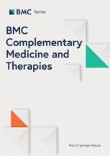
2018 BMC Complementary Medicine and Therapies
Ma Huang Tang may lower the duration of fever when it is used alone or in combination with neuraminidase inhibitors and may be a well-tolerated treatment.
Systematic Review Common Cold, Flu & Viral Infections Ma Huang Tang
The use of maoto (Ma-Huang-Tang), a traditional Japanese Kampo medicine, to alleviate flu symptoms: a systematic review and meta-analysis
Yoshino, T., Arita, R., Horiba, Y. et al
Review Articles
Review articles summarise and critically evaluate the current state of research on a specific topic or field by synthesising multiple primary research studies.

Traditional Chinese medicines as effective agents against influenza virus-induced pneumonia
2022 Sep Biomedicine & Pharmacotherapy Yang M, Wang Y, Yue Y, Liang L, Peng M, Zhao M, et al.
There has been some progress in the prevention and treatment of IVP by using TCMs. However, most research has focused on viral replication, the role of inflammatory cytokines, oxidative stress, and lung inflammatory cell infiltration in the pathogenesis of the disease, while there has been relatively little in-depth research on the lung lesions caused by influenza virus infection and on the role TCMs may have in preventing them. At present, analyses of the chemical components and mechanisms of action of TCMs useful in the treatment of IVP are insufficient, and this restricts their further use.
Systematic Review Meta-Analysis influenza virus-induced pneumonia
The Anti-Viral Activity of Prunella vulgaris: A Narrative Review
2022 Jul 01 Integrative Medicine Reports Mak WCK, Walsh S
investigators found that polysaccharides, polyphenolics, triterpenoic acids, and essential oils in P. vulgaris were potent to be anti-viral. The most frequently investigated viral types were HIV, HSV, and influenza virus, to which P. vulgaris extracts were found to be effective. P. vulgaris extracts exhibited good anti-viral activities. However, there is difficulty in producing a collective, summarized, and quantitative analysis from the reviewed articles to the anti-viral effects of P. vulgaris due to the complexity and diverse focus of investigations reported.
Review Article Antiviral
Anti-Influenza with Green Tea Catechins: A Systematic Review and Meta-Analysis
2021 Jun 30 Molecules Rawangkan A, Kengkla K, Kanchanasurakit S, Duangjai A, Saokaew S
Systematic Review Meta-Analysis InfluenzaGreen tea consumption has been found to be effective in preventing the contraction of influenza infections.

Substantial effect of phytochemical constituents against the pandemic disease influenza—a review
2021 Jun 12 Future Journal of Pharmaceutical Sciences Devi, A.B., Sarala, R
This article provides a summary of the actions of the herbal constituents. Since the mechanisms of action of the components are elucidated, the pandemic situation arising due to influenza and similar antiviral diseases can be handled promisingly with greater efficiency.
Review Article Influenza
Phytochemical Profiles and their Anti-inflammatory Responses Against Influenza from Traditional Chinese Medicine or Herbs
2021 Jan 14 Mini-Reviews in Medicinal Chemistry Ti H
Review Article Influenza Anti-InflammatoryClinical Trials
Clinical trials are research studies that involve people and are conducted to evaluate the safety and efficacy of new treatments or interventions, such as drugs, medical devices, or behavioural therapies.
Study Protocols
Published study protocols are detailed plans that outline the objectives, methodology, statistical analyses, and organisation of a research study that have been made publicly available for others to review and use as a reference.
Presentation Slides

Experimental Study
Bee-collected pollen and bee bread, particularly when artificially fermented, demonstrate significant antiviral activity against the H1N1 strain of the influenza A virus.
Dimitriou T, Asoutis Didaras N, Barda C, Skopeliti D, Kontogianni K, Karatasou K, Skaltsa H, Mossialos D

Systematic Review
Green tea consumption has been found to be effective in preventing the contraction of influenza infections.
Rawangkan A, Kengkla K, Kanchanasurakit S, Duangjai A, Saokaew S

Review Article
Traditional Chinese medicine impacts on the prevention and treatment of influenza with potential value in shorting fever durations and alleviating influenza symptoms among children and pregnant women.
Xiong Y, Li NX, Duan N, Liu B, Zhu H, Zhang C, Li L, Lu C, Huang L

Review Article
Tea catechins, found in green tea, may reduce the rates of influenza infection and diminish certain cold symptoms.
Furushima D, Ide K, Yamada H

Systematic Review
Ma Huang Tang may lower the duration of fever when it is used alone or in combination with neuraminidase inhibitors and may be a well-tolerated treatment.
Yoshino, T., Arita, R., Horiba, Y. et al
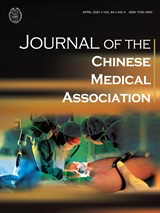
Meta-Analysis
Compared with oseltamivir, Chinese herbs might have superior potential effects on fever resolution and similar effects on viral shedding.
Li, Jiang-Honga,; Wang, Re-Qina; Guo, Wen-Jieb; Li, Juan-Shengc
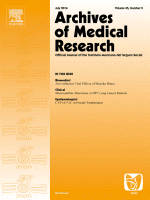
Network Pharmacology
Manuka honey exhibits significant anti-influenza viral activity, inhibiting replication with virucidal effects. Combining manuka honey with existing drugs enhances their efficacy, suggesting its medicinal potential.
Watanabe K, Rahmasari R, Matsunaga A, Haruyama T, Kobayashi N

Network Pharmacology
Honey, in general, and particularly manuka honey, has potent inhibitory activity against the influenza virus, demonstrating a potential medicinal value.
Watanabe K, Rahmasari R, Matsunaga A, Haruyama T, Kobayashi N

Systematic Review
Most Chinese medical herbs in the included studies showed similar effects to antiviral drugs in preventing or treating influenza.
Jiang L, Deng L, Wu T.
Executive Summary
Write an executive summary in the form of a blog article on the topic of "Research into Chinese medicine treatment for Influenza" summarising the research below and using language that can be easily understood by patients and avoiding medical jargon using a professional and caring tone of voice.
Write an executive summary in the form of a blog article on the topic of "Researched Chinese medicine treatments for Influenza" summarising the research below in an objective and easy to understand way, and using language that can be easily understood by patients. Group the article into Chinese medicine treatments first, followed by nutrition and other treatments. Avoid using medical jargon and use a professional and caring tone of voice.
Write me a concise but easy to understand executive summary on the topic of "Chinese medicine treatments for Influenza" based on the following research that I will give you. Your summary should be 2 paragraphs long in Australian English spelling and include references to the studies.
A Experimental Study published in 2023 in the journal Foods found that Bee-collected pollen and bee bread, particularly when artificially fermented, demonstrate significant antiviral activity against the H1N1 strain of the influenza A virus. The research investigated the antiviral properties of bee-collected pollen (BCP) and bee bread (BB), including versions that had undergone artificial fermentation. The experiment also assessed separate proteins, water content, and -butanol portions of these substances. The analysis evaluated their effectiveness against the H1N1 strain of the influenza A virus (IAV). The antiviral behavior of these materials was taken in lab conditions via a comparative real-time PCR analysis working on their inhibitory concentration and selectivity index. The outcomes revealed artificial fermentation improved the antiviral effectiveness of BCP. The protein fractions within the BCP and BB presented the greatest antiviral activity. Observations also highlighted that the chemical composition, prominent in proteins, and potentially microbiome metabolism determined the antiviral properties of BCP and BB. The chemical profile analysis emphasized the existence of some specialized metabolites that might be contributing towards this antiviral action.
A Systematic Review published in 2021 in the journal Molecules found that Green tea consumption has been found to be effective in preventing the contraction of influenza infections. To identify the potential benefits of green tea in influenza prevention, a methodical review and combined analysis of eight distinct research studies involving 5,048 participants was completed. The effect of green tea catechin treatment was tested against control conditions and assessed based on infection rates. Five of these studies were randomized controlled trials involving 884 participants and three were cohort studies with 2,223 participants. Subgroups such as those who gargled or took orally ingested forms of green tea were also analyzed separately. Further to this, the possibility of publication biases was evaluated using Begg's and Egger's tests. The results showed both the randomized trials and the cohort studies displayed significant preventative effects on influenza infection for those treated with green tea catechins. Notably, there was no evidence of non-uniformity within the data, reinforcing these findings. The pooled results of different consumption methods further supported these findings, showing no disparities among the subgroups. These results suggest the consumption of green tea has tangible prophylactic effects against influenza infection.
A Review Article published in 2020 in the journal Frontiers in Pharmacology found that Traditional Chinese medicine impacts on the prevention and treatment of influenza with potential value in shorting fever durations and alleviating influenza symptoms among children and pregnant women. Influenza infection is a highly contagious, acute febrile respiratory disease caused by the influenza virus. Traditional Chinese Medicine (TCM) has dominated plenty of theoretical and practical approaches in the treatment of influenza. It is, therefore, important to highlight the effects of TCM in the clinical treatment of influenza and their impact on inhibiting the growth of this virus in laboratory experiments. We scrutinized existing evidence on whether TCM is effective in clinical applications. Moreover, we described the potential mechanisms of TCM against the influenza virus. Our findings provide analytical evidence that supports the effectiveness of TCM in treating influenza infections as well as their mechanisms against this virus.
A Review Article published in 2018 in the journal Molecules found that Tea catechins, found in green tea, may reduce the rates of influenza infection and diminish certain cold symptoms. The research methodology started with interpreting several experimental studies which reported that tea catechins can inhibit influenza viral adsorption and suppress replication and neuraminidase activity. These catechins were also found effective against some common cold viruses and helped to enhance immunity against such viral infections. Additionally, epidemiological studies conducted since the late 1990s were examined which suggested that regular consumption of green tea may decrease influenza infection rates and some cold symptoms, and gargling with tea catechin could potentially protect against the development of influenza infection. For the discussion of results, the studies collectively showed that tea catechins have potential antiviral activity against influenza and some cold viruses. Although clinical evidence supporting these effects remained unconclusive, the review showed promising trends. The consumption of green tea and gargling with tea catechins could lead to potentially decreased rates of influenza infection and lessened cold symptoms according to the analyzed epidemiological studies.
A Systematic Review published in 2018 in the journal BMC Complementary Medicine and Therapies found that Ma Huang Tang may lower the duration of fever when it is used alone or in combination with neuraminidase inhibitors and may be a well-tolerated treatment. Twelve relevant studies were identified, including two randomised controlled trials (RCTs, N = 60) and ten non-randomised studies (NRSs, N = 1110). We found that maoto plus NAIs was superior to NAIs alone in terms of the duration of fever in one RCT and four NRSs. The duration of symptoms or virus isolation did not differ between maoto and NAIs. No severe side effects or adverse reactions were reported related to maoto or NAIs. Although we could not reach a definitive conclusion because of the small sample sizes and high risk of bias in the analysed studies, maoto may lower the duration of fever when it is used alone or in combination with NAIs and may be a well-tolerated treatment. More RCTs are needed to determine the efficacy and safety of maoto.
A Meta-Analysis published in 2016 in the journal Journal of the Chinese Medical Association found that Compared with oseltamivir, Chinese herbs might have superior potential effects on fever resolution and similar effects on viral shedding. In this review, several Chinese herbal medicines demonstrated a potentially positive effect on the influenza A (H1N1) strain, especially on its time to defervescence, as in the studies analyzed, the mean time to defervescence in the TCM treatment group was less than that noted in the control group. Furthermore, the duration of influenza A (H1N1) shedding in the integrated Chinese and Western medicine subgroup was less than that noted in the control group, although existing evidence indicated that the difference in duration of viral shedding and effective rate between the two groups was statistically similar. The applicability of the included studies was limited, however, because their inclusion criteria, interventions, durations, and outcome measures were different. Consequently, more well-designed trials are required.
A Network Pharmacology published in 2014 in the journal Archives of Medical Research found that Manuka honey exhibits significant anti-influenza viral activity, inhibiting replication with virucidal effects. Combining manuka honey with existing drugs enhances their efficacy, suggesting its medicinal potential. This study aimed to address the urgent need for novel anti-influenza drugs by evaluating the anti-viral activity of honey, focusing on manuka honey. Antiviral activities were assessed using MDCK cells, revealing that manuka honey efficiently inhibited influenza virus replication with an IC50 of 3.6 ± 1.2 mg/mL and a CC50 of 82.3 ± 2.2 mg/mL, resulting in a selective index of 22.9. Virucidal effects were identified as the underlying mechanism. Furthermore, combining manuka honey with zanamivir or oseltamivir significantly enhanced their efficacy, showcasing the potential medicinal value of honey, particularly manuka honey, against the influenza virus. The study underscores the potent inhibitory activity of honey, especially manuka honey, against influenza viruses, offering promising medicinal implications. The observed virucidal effects and the synergistic enhancement of known anti-influenza drugs highlight the multifaceted potential of honey in combating influenza infections. Further exploration of the specific mechanisms underlying these effects could contribute to the development of effective anti-influenza therapies.
A Network Pharmacology published in 2014 in the journal Archives of Medical Research found that Honey, in general, and particularly manuka honey, has potent inhibitory activity against the influenza virus, demonstrating a potential medicinal value. Antiviral activities of honey samples were evaluated using MDCK cells. To elucidate the possible mechanism of action of honey, plaque inhibition assays were used. Synergistic effects of honey with known anti-influenza virus drugs such as zanamivir or oseltamivir were tested. Manuka honey efficiently inhibited influenza virus replication (IC50 = 3.6 ± 1.2 mg/mL; CC50 = 82.3 ± 2.2 mg/mL; selective index = 22.9), which is related to its virucidal effects. In the presence of 3.13 mg/mL manuka honey, the IC50 of zanamivir or oseltamivir was reduced to nearly 1/1000th of their single use.
A Systematic Review published in 2013 in the journal Cochrane Database of Systematic Reviews found that Most Chinese medical herbs in the included studies showed similar effects to antiviral drugs in preventing or treating influenza. This updated review assessed the therapeutic effects and safety of Chinese medicinal herbs as an alternative and adjunctive therapy to other commonly used drugs for influenza. Eighteen studies involving 2521 participants were included in the review. 'Ganmao' capsules were found to be more effective than amantadine in decreasing influenza symptoms and aiding recovery in one study (in which adverse reactions were mentioned in the amantadine group although no data were reported). There were no significant differences between 'E Shu You' and ribavirin in treating influenza, nor in the occurrence of adverse reactions. The remaining 17 Chinese herbal trials showed a similar effect to antiviral drugs in preventing or treating influenza. However, since these included studies were of poor quality, the evidence does not support or reject the use of any Chinese herbal preparations for influenza. High‐quality trials are required.
Moderation Tools
Topic
Sign In
Users not signed in are limited to viewing the 5 most recent items of content.
Need to purchase article, can't access fully —Adrian Y 1 Mar 2023